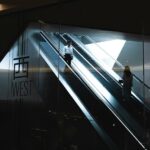Step into the fascinating world of old elevators as we embark on a journey to unravel their intricate mechanical complexities. In this article, we will delve into the historical development of these iconic machines and explore the unique challenges they present. Join me, an accomplished mechanical engineer with a passionate devotion to elevator systems, as we uncover the inner workings of these time-honored marvels. Prepare to be amazed by the technical expertise and meticulous attention to detail required to preserve the historical significance of these elevators for generations to come.

Mechanical Workings of Old Elevators
As a mechanical engineer with a deep passion for old elevators, I have spent years unraveling the mechanical complexities of these iconic machines. In this article, we will explore the fascinating world of old elevator systems, delving into their historical development and the unique challenges they present.
The Evolution of Elevator Control
In the early days of elevators, simple electromechanical systems were used for control. These old-school elevators only had three commands: “up”, “down”, and “stop”. Relay panels played a crucial role in handling the significant amount of current required for elevator operation. Logic circuits, constructed using relays, provided the necessary control signals.
“Even though these early elevators may seem uncomplicated compared to modern ones, they laid the foundation for the remarkable advancements in elevator technology we have today.”
From Pushbuttons to Governor Systems
One noticeable difference between old and modern elevators is the control mechanism. While fancy modern elevators feature pushbuttons for each floor, old elevators relied on relay-based control panels. These electromechanical systems required skilled operators to manually control the elevator’s movement.
Another critical component of old elevators is the governor system. Most elevators have a separate speed-regulating system known as the governor. This system utilizes a heavy flywheel with mechanical arms and braking systems to regulate the elevator’s speed and prevent it from reaching dangerous levels.
“The governor system in old elevators was a marvel of mechanical engineering, ensuring the safety of passengers and the smooth operation of the elevator.”
Technological Innovations and Safety Measures
Advancements in electronic systems during World War II brought about significant changes to elevator technology. These innovations allowed for more precise control and improved safety measures. One pivotal figure in elevator safety is industrialist Elisha Otis, credited with inventing the safety device that prevents elevators from free-falling in case of a cable failure.
“Otis’ safety device revolutionized elevator safety, making vertical transportation accessible and reliable.”
Understanding the Power Conversion
To comprehend the mechanical workings of old elevators, it is crucial to understand how electrical power is converted into mechanical power. These elevators utilize a combination of a worm gear and a motor to convert electrical energy into mechanical energy for operation. The worm gear serves to transmit the rotational motion from the motor to the elevator’s pulley system.
“The conversion of electrical power to mechanical power is the heartbeat of old elevators, allowing passengers to be effortlessly transported between floors.”
The Melody of Mechanical Motion
One cannot explore the mechanical workings of old elevators without acknowledging the distinct sounds they produce. From the hypnotic hum of the motor to the creaks of turning wheels and even the reassuring click as each floor passes by, these sounds create a symphony that instantly transports us back in time.
“The melodies of old elevators offer a nostalgic reminder of their mechanical intricacies and historical significance.”
In conclusion, exploring the mechanical workings of old elevators is akin to embarking on a journey through time, unraveling the complexities of these mechanical marvels. From their humble beginnings to the introduction of safety measures and technological advancements, every aspect of these elevators tells a story. So, the next time you step into an old elevator, remember to appreciate the mechanical symphony that accompanies your vertical journey.
Old elevators have a fascinating history and there is so much to discover about them. If you are curious to learn facts about these vintage marvels, click here to explore ../facts-about-old-elevators and uncover a wealth of intriguing information. Delve into the evolution, mechanics, and anecdotes surrounding old elevators, and gain a newfound appreciation for these historical machines. Get ready for a deep dive into the captivating world of old elevators!

FAQ
Question 1
What were the control systems used in old school elevators?
Answer 1
Old school elevators used relay panels and logic circuits made of relays to handle elevator control, with options for “up,” “down,” and “stop” movements.
Question 2
How do old and modern elevators differ in terms of floor selection?
Answer 2
Unlike old school elevators, modern elevators have pushbuttons for each floor, providing a more convenient and user-friendly way to select desired floors.
Question 3
What is the purpose of a governor in most elevators?
Answer 3
Most elevators have a separate speed-regulating system called a governor. The governor utilizes a heavy flywheel with mechanical arms and braking systems to ensure safe and controlled elevator speed.
Question 4
What advancements in elevator systems occurred during World War II?
Answer 4
During World War II, elevators underwent changes with the introduction of electronic systems, leading to improvements in their overall performance and functionality.
Question 5
Who is credited with inventing the safety device for elevators?
Answer 5
The credit for inventing the safety device for elevators goes to industrialist Elisha Otis, whose innovation significantly enhanced the safety and reliability of elevators.
- Jesus Bible: Discover Jesus’s Story Throughout Scripture - April 27, 2025
- Don Luis: Unraveling the 16th-Century Virginia Mystery - April 27, 2025
- Captain J’s Kauai Tours: Unforgettable Na Pali Coast Adventures - April 27, 2025
















